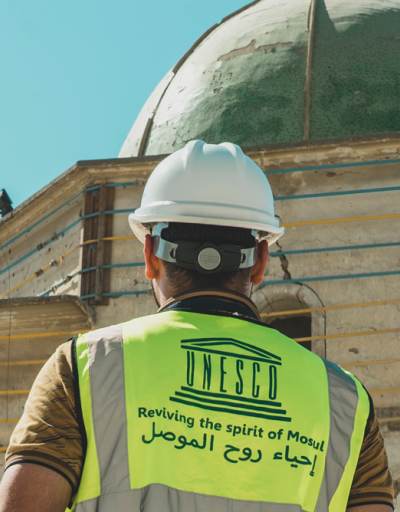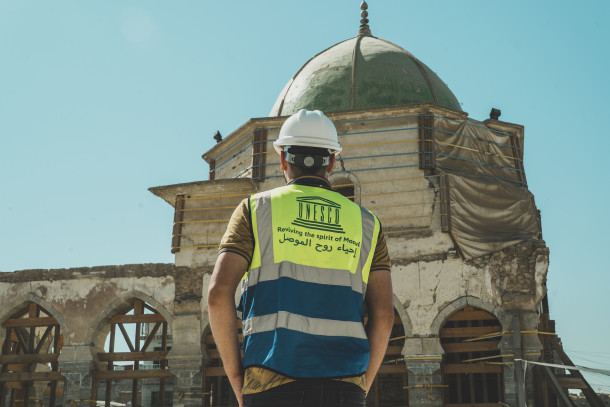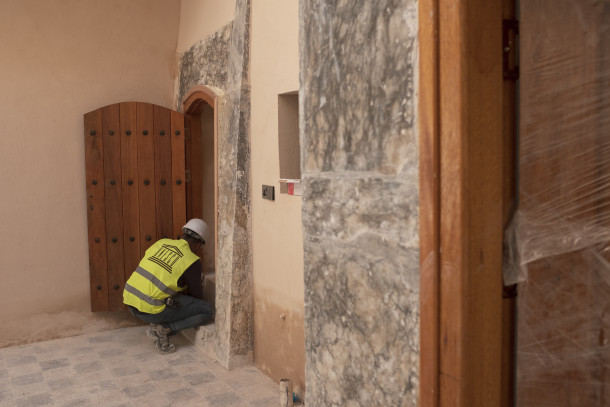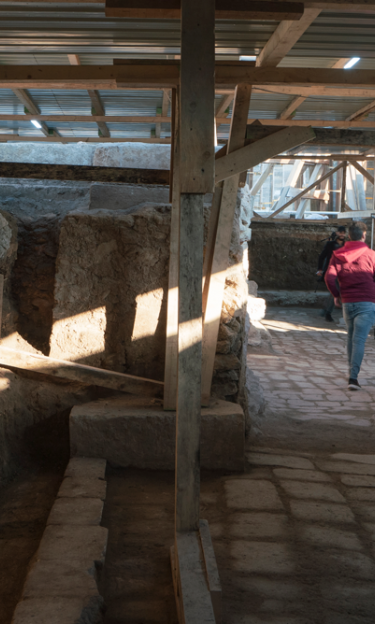
About the initiative
Mosul, symbol of multicultural dialogue
The city of Mosul, whose name means “the linking point" in Arabic,.
Over 2500 years, Mosul has been a bridge between north and south, east and west. Due to its location, it became a melting pot of diverse cultures and groups, a crucible of Iraq’s pluralistic identity marked by the co-existence of its various ethnic, linguistic, and religious groups.
The rich heritage of the Old City of Mosul, with its intricate labyrinth of small streets had long been well-preserved with monuments and buildings blending elements of Islamic and Nestorian Christian architecture and decorative arts. The built heritage of the Old City of Mosul reflected the interchange of values of tolerance and co-existence through many centuries.
The architecture of Mosul was characterized by highly decorated brick facades, marble interiors, muqarnas vaults and masonry that is often carved with decorative motives and inscriptions, adorning doors, windows and arcades. The local alabaster stone - often dubbed as “Mosul marble” – it is an example of architectural sophistication that gives Mosul its distinctive character.
The Great al-Nouri Mosque was undoubtedly one of the most significant buildings in the Old City. Its renowned, 45 metre tall al-Hadba Minaret was an iconic architectural landmark and a symbol of Mosul and its inhabitants. Together with the Clock Tower of the Dominican Convent, al-Hadba dominated the skyline of Mosul.
It is because Mosul was so singular, so multicultural, so steeped in interreligious dialogue that it was suddenly targeted by ISIL/Daesh. The invasion of the city in June 2014, its occupation for three years and the subsequent battle for its liberation in July 2017, caused the destruction of 80% of the Old city.

In February 2018, a Conference for the Reconstruction of Iraq was held in Kuwait. The International community announced a strong mobilization for the rehabilitation of the country's infrastructure. UNESCO stood up to uphold the human dimension.
“Revive the Spirit of Mosul” is UNESCO’s most ambitious reconstruction campaign in recent decades. It is based on three pillars: heritage, cultural life and education, as essential drivers for the recovery of Mosul.
UNESCO is set to reconstruct the iconic Al-Nouri Mosque and its Al-Hadba Minaret, Notre-Dame de l’Heure Convent and Al Tahera Church, 122 heritage houses, the Aghawat Mosque as well as Al-Ekhlass school in the Old City of Mosul.

In the field of culture, UNESCO opened a cultural and creative space, relaunched cultural festivals - reading, music performance, open-air cinema projections - In the field of education, in addition to the rehabilitation of classrooms, UNESCO has launched a vast program to Prevent Violent Extremism through Education (PVE). UNESCO’s Revive the Spirit of Mosul initiative also benefits Moslawis women and men through employment opportunities and on the-job-training linked to the restoration and reconstruction of cultural heritage. This is fundamental for building capacities and enhancing social inclusion in Iraq at this critical time.




